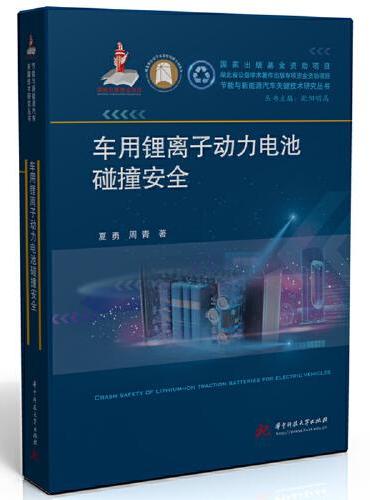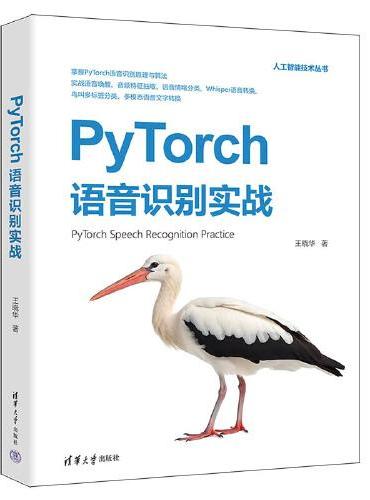新書推薦:

《
车用锂离子动力电池碰撞安全
》
售價:NT$
885.0

《
中国近代史(中国史学大家蒋廷黻典作品)
》
售價:NT$
223.0

《
先跳了再说: 仓本聪的工作与生活哲学
》
售價:NT$
314.0

《
抗焦虑饮食(赠实践手册)
》
售價:NT$
498.0

《
生活不是掷骰子:理性决策的贝叶斯思维
》
售價:NT$
386.0

《
万有引力书系·基辅罗斯:东斯拉夫文明的起源
》
售價:NT$
661.0

《
康熙的红票:全球化中的清朝
》
售價:NT$
437.0

《
PyTorch语音识别实战
》
售價:NT$
386.0
|
| 編輯推薦: |
|
电磁场理论是现代电子技术的基础课程,其应用遍及整个国家经济,在各个领域中具有广泛的应用。本书主要介绍了普物电磁学、静态场的边值问题、宏观电磁理论、平面电磁波的传播性质及其在边界面上的反射、折射和导行电磁波等。学习本书对培养学生严谨的科学作风、抽象思维能力及科学的创新精神起到非常重要的作用。
|
| 內容簡介: |
电磁场理论是现代电子技术的基础课程,其应用遍及整个国家经济,上至天文,下至地质,涵盖了工业、农业、军事、医学和环境保护等各个领域,即使饮食、家电等生活方面也得到广泛应用。没有电磁波的发射、传输和接收,就不会有电视、通信、雷达、遥感、测控和电子对抗等等。电磁理论也是许多交叉学科的孕育点,学习电磁场理论对培养学生严谨的科学作风、抽象思维能力及科学的创新精神起到非常重要的作用。深厚的电磁理论是欲在电子技术领域有所作为者不可少缺的功底。
电磁场理论的讲述无非是“从一般到特殊”和“从特殊到一般”两种途径,对不同读者两者各有其优点。根据作者二十余年讲授本课程的体会,在课程系统的总体安排上,按“从特殊到一般”的循序渐进方式,有利于初学者对本课程的理解;而讲授具体问题时,采用从“一般到特殊”的方法,则可以节省学时且理论上较为严谨。
本教材共分十章,章矢量分析作为学习电磁场理论的必要数学工具,强调了各种坐标系描述物理关系的一致性及三种主要坐标系的相互关系和场论基础。第二、三、四、六章为静电场、恒定电场、恒定磁场和电磁感应,涵盖了普物电磁学的全部内容,统一了普物电磁学和电磁场两种描述方法。第五章静态场的边值问题侧重于分离变量法和镜像法,以有限差分法为例说明数值法在解决复杂边值问题时的重要性。第七章时变电磁场总结了宏观电磁理论,引出麦克斯韦方程组,讨论能流密度概念为电磁波的论叙奠定基础。第八章较详细地论叙了平面电磁波的传播性质及其在边界面上的反射、折射,并对损耗媒质中的传播作了简要介绍。第九章导行电磁波讨论了导行波的基本原理和处理导行波的基本方法。第十章辐射讨论电磁能量的辐射原理,简介了基本辐射天线。
|
| 關於作者: |
|
李厚民,博士,教授级高级工程师,籍贯湖北荆门。2005年清华大学材料科学与工程系学士,2006年美国南加州大学材料科学与工程系硕士,2008年美国奥本大学高分子与纤维工程系硕士,2011年,美国奥本大学电子与计算机工程系硕士,2011年,美国奥本大学高分子与纤维工程系博士。攻读学位期间曾担任电磁场理论、通信系统实验、线性信号与系统课程助教讲师,并获得校企联合培养机会,在美国萧氏工业集团(福布斯500强,巴菲特控股)任职1年,在美留学期间曾参与多项重点科研项目。2011年博士毕业后回国,任教于北京理工大学信息与电子学院,主讲电磁场理论及微波工程基础等课程。长期从事电磁材料与结构,低损耗超宽带微波毫米波结构与器件,微波毫米波电路先进制造技术等领域的教学与研究工作。出版学术专著1部,发表SCI/EI检索论文20余篇,授权发明专利20余项。
|
| 目錄:
|
Chapter 1 Vector Analysis
§ 1. 1 Vector Function and Vector Operations
§ 1. 2 Cartesian Curvilinear System
§ 1. 3 Gradient, Divergence, and Curl
§ 1. 4 Several Important Vector Fields
§ 1. 5? δ Function, Green?s Theorem, and Helmholtz Theorem
Chapter 2 Electrostatics
§ 2. 1 Charge and Charge Density
§ 2. 2 Coulomb?s Law
§ 2. 3 Electric Field and Electric Field Intensity
§ 2. 4 Electric Field Line and Electric Flux
§ 2. 5 Gauss?s Law
§ 2. 6 Electrostatic Field Loop Theorem
§ 2. 7 Electric Potential and Potential Difference
§ 2. 8 Poisson?s and Laplace?s Equation of Electric Potential
§ 2. 9 Electric Dipole
§ 2. 10 Electrostatic Field in Dielectrics
§ 2. 11 Conductors in Electrostatic Field
§ 2. 12 Energy and Force of Electric Field
§ 2. 13 Capacitor
Chapter 3 Steady Electric Field and Current
§ 3. 1 Current and Current Density
§ 3. 2 Fundamental Laws of Steady Current Field
§ 3. 3 Power Source and Electromotive Potential
§ 3. 4 Ohm?s Law and Joule?s Law
§ 3. 5 Boundary Condition of Steady Current Field
§ 3. 6 Comparison Between Steady Current Field and Electrostatic Field
Chapter 4 Magnetostatic Field
§ 4. 1 Magnetic Force and Magnetic Field Intensity
§ 4. 2 Motion of Charged Particle in Magnetic Field
§ 4. 3 Ampère?s Magnetic Force Law and Biot?Savart?s Law
§ 4. 4 Fundamental Laws of Steady Magnetic Field
§ 4. 5 Vector and Scalar Magnetic Potentials
§ 4. 6 Magnetic Dipoles
§ 4. 7 Magnetization of Magnetic Media
§ 4. 8 Fundamental Laws of Magnetic Field in Magnetic Media
§ 4. 9 Ferromagnetic Media
§ 4. 10 Boundary Conditions on Magnetic Media Interface
Chapter 5 Boundary Value Problems of Static Fields
§ 5. 1 Uniqueness theorem and Principle of Superposition
§ 5. 2 Separation of Variables of Laplace Equation
§ 5. 3 The Method of Images
§ 5. 4 Complex Analysis
§ 5. 5 Finite Difference Method
Chapter 6 Electromagnetic Induction
§ 6. 1 Faraday?s Law
§ 6. 2 Generalization of Faraday?s Law
§ 6. 3 Inductance
§ 6. 4 Energy in Magnetic Field
Chapter 7 Time Varying Electromagnetic Field
§ 7. 1 Displacement Current and Generalized Ampère?s Law
§ 7. 2 Maxwell?s Equations
§ 7. 3 Time Harmonic Electromagnetic Field
§ 7. 4 Dispersion and Loss
§ 7. 5 Poynting?s Theorem
§ 7. 6 Wave Equation of Electromagnetic Field
§ 7. 7 Scalar and Vector Potential
§ 7. 8 Boundary Condition of Time Varying EM Field
Chapter 8 Plane Wave
§ 8. 1 General Solution of Helmholtz Equation
§ 8. 2 Uniform Plane Wave in Ideal Media
§ 8. 3 Polarization of Electromagnetic Wave
§ 8. 4 Uniform Plane Wave in Conductive Media
§ 8. 5 Phase Velocity and Group Velocity
§ 8. 6 Reflection and Transmission of Electromagnetic Wave on Ideal Media Interface
§ 8. 7 Total Transmission and Total Reflection
§ 8. 8 Reflection and Transmission of Lossy Media Interface
§ 8. 9 Reflection and Transmission in Multilayer Media
Chapter 9 Guided Electromagnetic Wave
§ 9. 1 Electromagnetic Fields of Guided Waves
§ 9. 2 Rectangular Waveguide
§ 9. 3 TE10 Mode
§ 9. 4 Energy Transmission and Losses in Waveguide
§ 9. 5 Circular Waveguide
§ 9. 6 TEM Wave on Transmission Lines
§ 9. 7 Cavity Resonators
Chapter 10 Radiation of Electromagnetic Wave
§ 10. 1 Retarded Potential
§ 10. 2 Radiation of Hertzian Dipole
§ 10. 3 Radiation of Magnetic Dipole Antenna
§ 10. 4 Line Antennas
§ 10. 5 Directivity and Gain
§ 10. 6 Antenna Array
|
| 內容試閱:
|
The spectacular advance in the development of modern electronic
technology is unparalleled in our history, the benefited areas cover the entire
economy ranging from industry, agriculture, defense, medical, environmental
protection, to even household appliances and our daily lives. The basis of
modern electronic technology is the electromagnetic field theory, which is also
the cross - touch point of multiple disciplines. Learning electromagnetic field
theory is a journey filled with logical thinking, abstraction, and creativity. The
journey can be rough yet vital to any student who seeks electronic technology -
related areas as their future career.
There are 10 Chapters in this book. Chapter 1 Vector Analysis introduces
the basic mathematical tools, stresses the uniformity of physics relationships
under various coordinate systems, the interchangeable relationships between the
three major coordinate systems, and fundamentals of field theory. Chapters 2,3,
4,6 are Electrostatic Fields, Steady Electric Field and Current, Magnetostatic
Field, and Electromagnetic Induction. These chapters cover all contents of
electromagnetism of general physics and unified the description methods of
electromagnetism and electromagnetic field theory. Chapter 5 Boundary Value
Problems of Static Fields stresses on Separation of Variables and the Method of
Images and used the Finite Difference Method as an example to demonstrate the
importance of the numerical method in solving complicated boundary value
problems. Chapter 7 Time - Varying Electromagnetic Field summaries
electromagnetic field theory under macro - scale, introduced Maxwell?s
equations, discussed energy flux density which paved way for the discussion of
electromagnetic waves. Chapter 8 discusses Plane Wave propagation and its
reflection and refraction across interfaces, plus its behavior in lossy media.
Chapter 9 discusses Wave Guide principles and the fundamental theories of
guided waves. Chapter 10 Radiation discusses the radiation principle of
electromagnetic energy and introduced the fundamentals of antenna theory.
For the book in general, we introduced the theory in a " from special to general" way, based on each fundamental building block to establishing the overall mathematical
models of the electromagnetic field theory while reaching the necessary depth of knowledge. And
when comes to each chapter, we reversed the order, hence in a " from general to special" way,
introducing fundamental laws first, then giving examples to save the time of learning.
The book also includes detailed contents of general physics and engineering mathematics/ vector
analysis/ field theory and made it possible for sophomore - year students with high school physics and
basic advanced mathematics knowledge to start learning electromagnetic field theory, greatly lowered
pre - requisites of electromagnetic field theory in general.
The book is a regenerated version of the classical 《电磁场理论基础》(陈重、崔正勤、胡冰
编著) into English language and is used as an English textbook for undergraduates in Electronics or
Information Engineering majors with a planned course of 76 -80 credit hours.
We would like to thank our colleagues who helped with this book, especially to Houjun Sun for
his suggestions, Beibei Xu for her proof reading and corrections, and to Kaiqiang Zhu for his
supportive work in the early publishing stage of this book.
Houmin Li, Shiyong Li, Zhong Chen, Bing Hu
|
|










